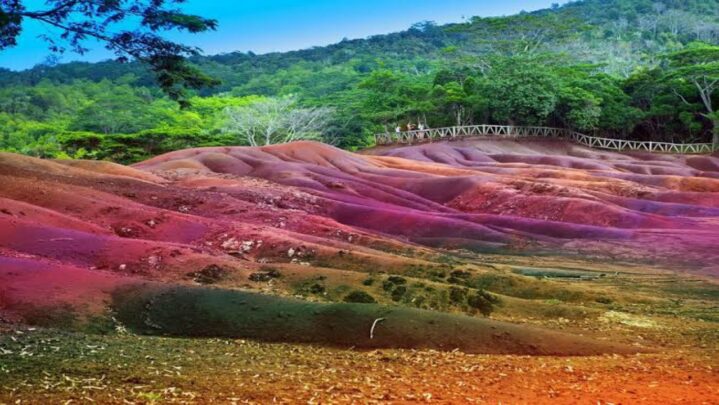Apart from its undeniable natural beauty, Mauritius provides passionate travellers with a multitude of intriguing and uncommon experiences in a colourful paradise rich in fascinating culture, history, and beautiful sights. The geopark known as Chamarel’s Seven Colored Earth is one such sight, which is far more beautiful in person than in any photograph.
Discover the natural world’s enchantment in Mauritius’ famed Chamarel Coloured Earth geopark. What you should know about this odd tourist attraction is as follows: In 1879, a member of Mauritius’ Royal Society of Arts and Sciences claimed to have discovered the incredible occurrence of coloured earth in Chamarel. The Chamarel settlement, located in the southwest of Mauritius, was named after the sons of a member of the island’s Superior Council, who were granted a large concession in the area in 1786.
The slow disintegration of volcanic lava into clay minerals over millennia is thought to be responsible for this astonishing phenomenon. Because of the island’s tropical climate, water-soluble components like silicon dioxide were washed out of the sand over time, leaving behind the incredible natural colours formed by iron and aluminium oxides, which naturally form separate layers. Different mineral compositions, as well as the temperatures at which the molten rock cooled, are thought to have produced other colours.
People used to be able to walk directly on the sand, but since then, wooden barriers have been erected to safeguard the region, and tourists may now enjoy the unique and colourful sands from one of the various viewpoints available. Taking sand from the site is strictly prohibited, however, the beautiful curio shop on the grounds sells little vials and bottles of Seven Coloured Earth sand to take home as a souvenir.
Although the amount of exposed coloured sand and dunes is tiny, it provides a captivating experience. This natural phenomenon is made up of seven various colours of sand: red, violet, brown, green, blue, purple, and yellow. You could be lucky enough to see all of them vividly if you go when the conditions are exactly right.
While it’s a spectacular sight at any time of day, the best time to see the seven-coloured earth in all its glory is as near to sunrise as possible on a clear day or just before sunset when the colours are at their most vibrant.
Keep reading successyeti.com
Also Read: How Trekking And Wandering In Nature Brings Us Happiness





